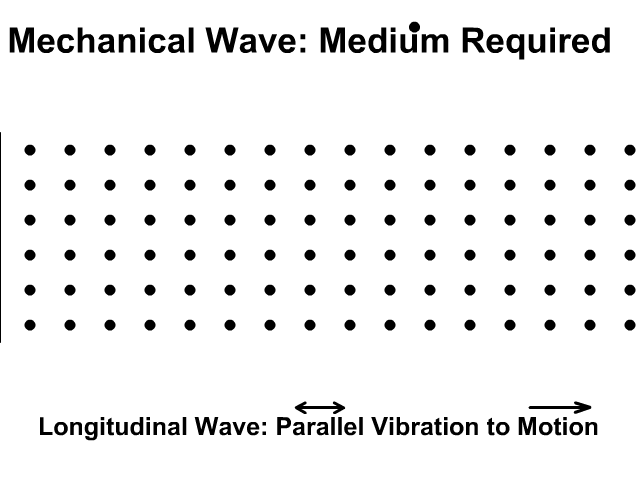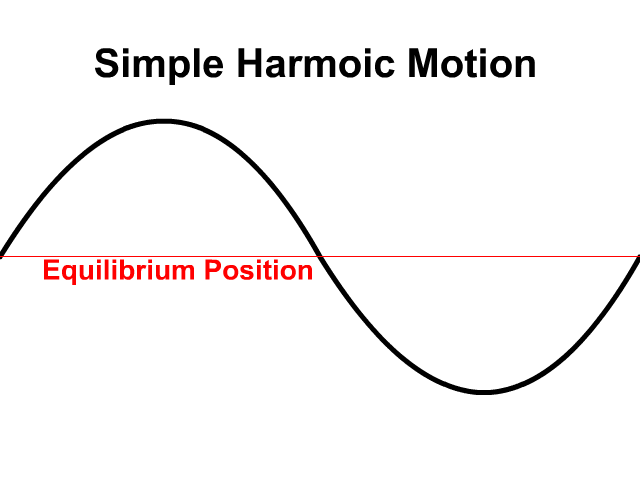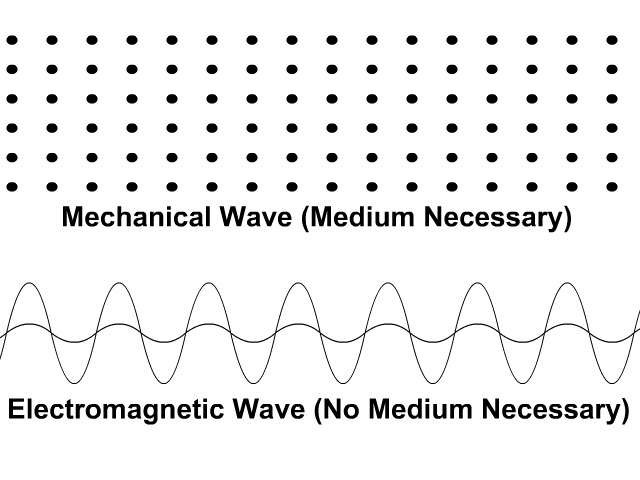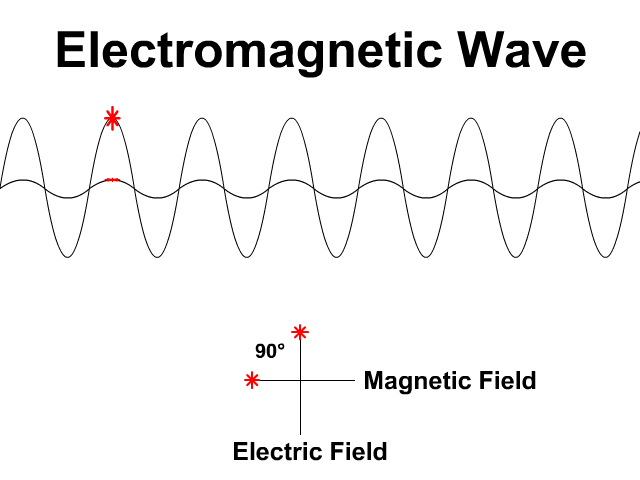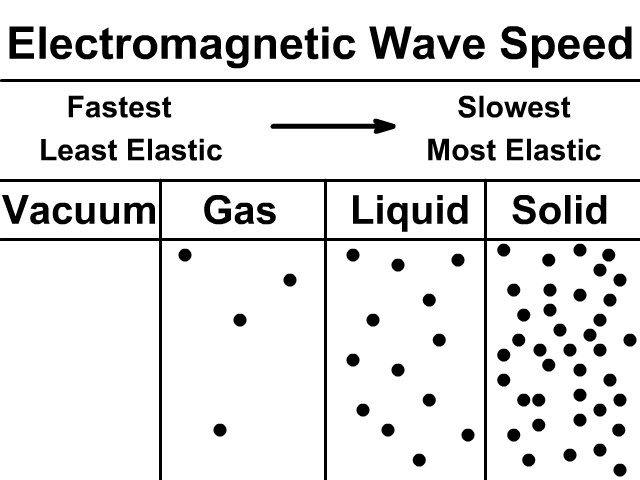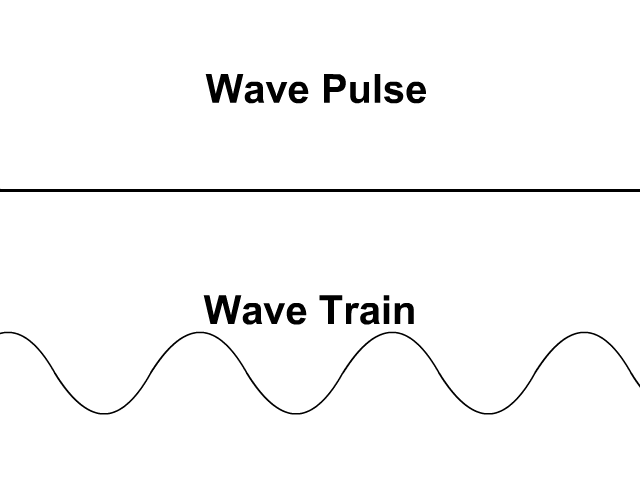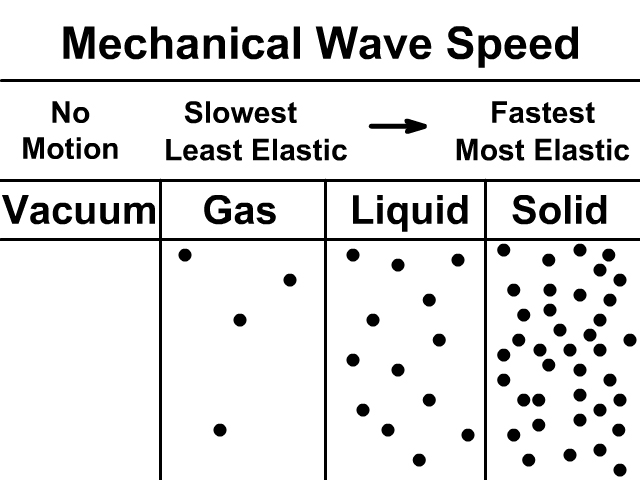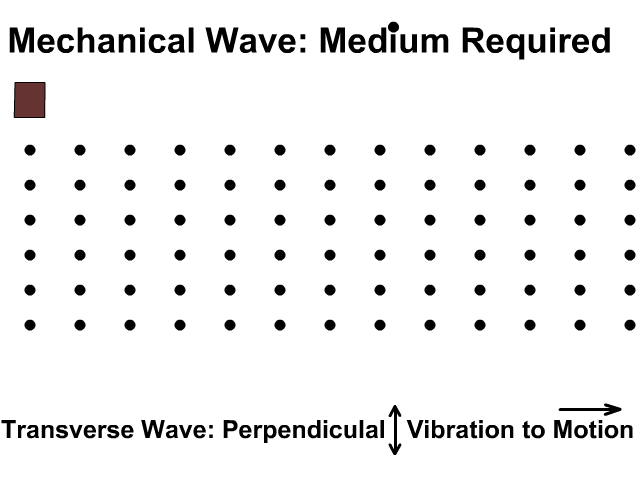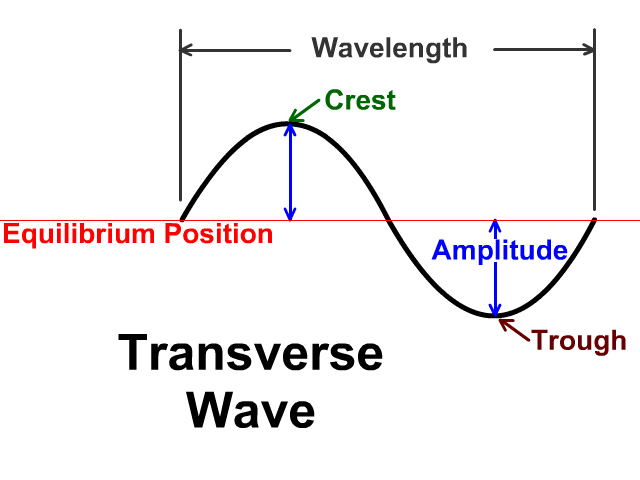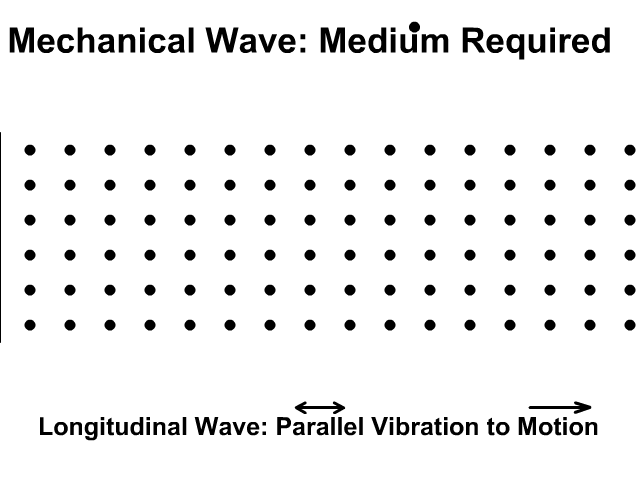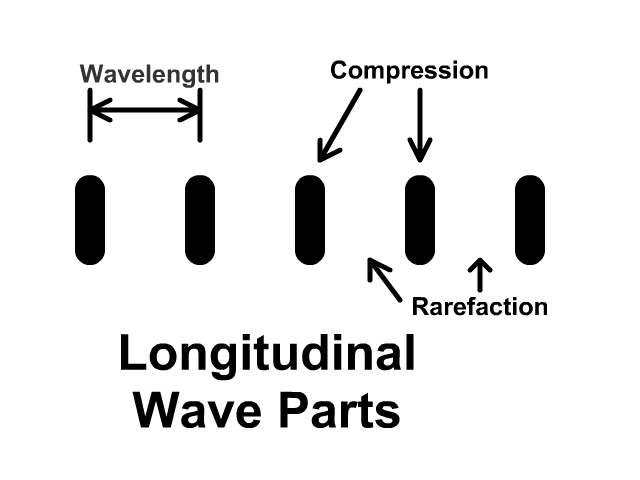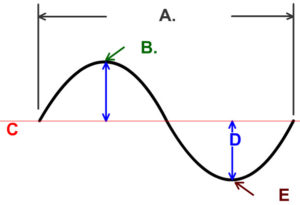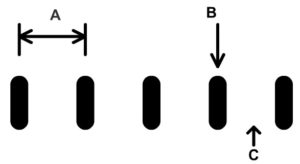Intro to Waves
Learn about basic waves. Find the difference between an electromagnetic and mechanical waves. See how a mechanical wave is different than a longitudinal.
Waves:
- Are disturbances that propagate or move energy through an empty space or through medium (particles such as atoms and molecules)
- Waves transfer energy without transferring matter
Waves Move in Simple Harmonic Motion
Waves move in simple harmonic motion. Simple harmonic motion is a back and forth motion around an equilibrium position.
Basic Electromagnetic and Mechanical Wave Differences
Two types of waves are mechanical and electromagnetic. Both involve energy propagating or moving from one location to another.
An electromagnetic wave starts with a vibrating charged particle which can be an electron shifting its energy level. Electromagnetic waves do not need medium (particles) to transfer energy and can move through the vacuum of space. Outer space is a vacuum because it does not have air particles like here on earth.
A mechanical wave starts with a vibration of a particle. Mechanical waves also need particles, also called medium, to propagate. Without particles, they cannot move through a vacuum like in outer space.
Electromagnetic Waves
Remember from previous units, a static charge creates an electric field and a moving charge creates a magnetic field. The result of a vibrating charged particle is both a transverse electric field and magnetic field wave.
The resulting electric field and a magnetic field in an electromagnetic wave vibrate perpendicular (90°) to each other.
Types of Electromagnetic Waves
The types of electromagnetic waves from longest wavelength to shortest are Radio, Microwave, Infrared (IR), Visible Light, Ultraviolet (UV), X-Ray, and Gamma Ray waves. Frequency of a wave is inversely proportional. So from highest frequency to lowest frequency would be reverse of the order above. Be careful in any question, a radio wave is an electromagnetic wave. A sound wave is a mechanical wave. A radio converts the radio wave signal into sound through a speaker. A sound wave and radio wave are very different types of waves as you will see in future lessons.
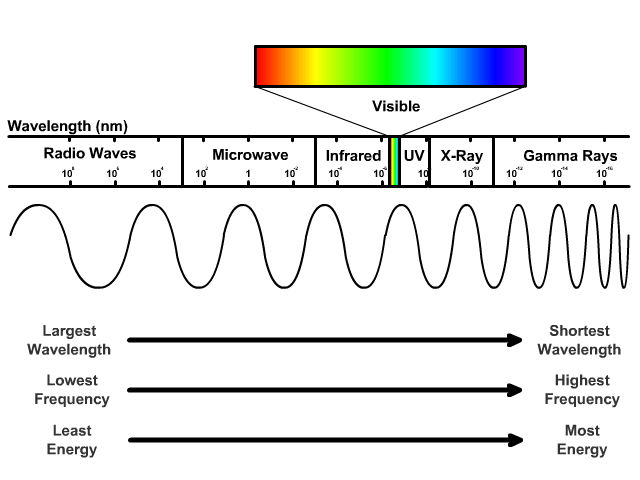
Speed of an Electromagnetic Wave
Electromagnetic waves start with energy released from a vibrating electrically charged particles, not vibrating medium. Therefore energy released does not need particles to propagate and moves fastest to empty space.
Electromagnetic waves travel quickest in a vacuum like space. As electromagnetic waves travel through more elastic or denser medium they slow down. Gas is less dense than liquid and a solid is the most dense. Electromagnetic waves travel the slowest through a solid.
Wave Propagation
In order to start and transmit a wave, a source of disturbance (vibration) is required.
Waves can propagate; transfer their energy, as a single vibration or wave pulse. They can also propagate if there is a continuous source of vibration called a wave train.
.
Questions
1. What do all waves transfer?
2. What do waves not transfer?
3. What is the do mechanical waves require that electromagnetic do not?
4. What is the difference between a wave train and pulse?
Mechanical Wave Types
The two types of mechanical waves that require a medium are transverse waves and longitudinal. A medium is matter particles like gas (ex. air), liquid (ex. Water), and solid (ex. earth). All mechanical waves start with a disturbance of medium.
Speed of a Mechanical Wave
Transverse waves need a medium to travel and therefore do not travel in the vacuum of space.
Mechanical waves travel slowest in the least elastic material. Elastic materials mean that the object is more rigid because of its density and less likely to change shape. The least elastic, dense, phase of matter is gas then liquid and the most elastic phase is solid.
Transverse Waves
Transverse waves vibrate perpendicular to wave energy movement. In mechanical transverse waves, a medium is disturbed in an upward or downward direction. The particles vibrate up and down returning to their original position as the energy moves perpendicular to that vibration forward.
Parts of a Transverse Wave
Equilibrium position
The equilibrium position of any wave is the middle point where vibrations occur around.
Crest and Trough
A transverse wave has a top called a crest and a bottom called a trough.
Wavelength (𝜆)
The distance from the equilibrium position to the crest, then to the trough, and back to the equilibrium position is a standard transverse wavelength (𝜆) measurement. Any crest to crest or trough to trough would also be a wavelength.
Amplitude
Amplitude is the measurement from the equilibrium position to the top of the wave. Amplitude can also be measured from the equilibrium position to the trough. Both measurements will be the same.
Longitudinal Waves
Longitudinal waves vibrate parallel to the movement of energy in a wave. The particles of a longitudinal mechanical wave will vibrate back and forth on the same plane as the motion of energy transfer.
Longitudinal Wave Parts
As longitudinal waves propagate they have areas of high density called compressions. Longitudinal waves have areas of less density called rarefactions. A wavelength can be measured from compression to compression.
Sound is a Longitudinal Mechanical Wave
A common longitudinal wave is a sound wave. In this animation the particles (i.e. air) are left out but would be vibrating back and forth and the energy is going in all directions outward. Here you can follow the compressions (represented by lines) ad rarefactions represented by the less dense open spaces.
Links
- On to Wave Math
- Back to the Main Waves Page
- Back to the Stickman Physics Home Page
- Equation Sheet

